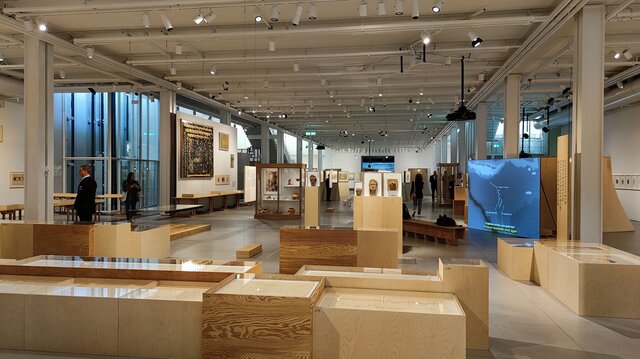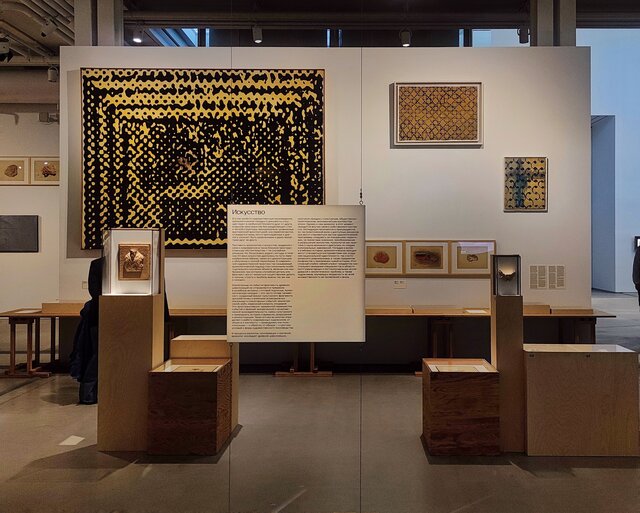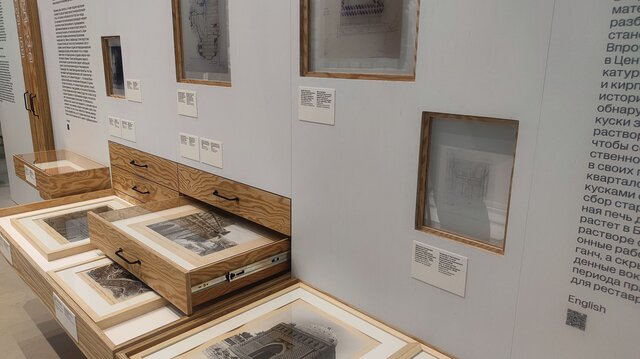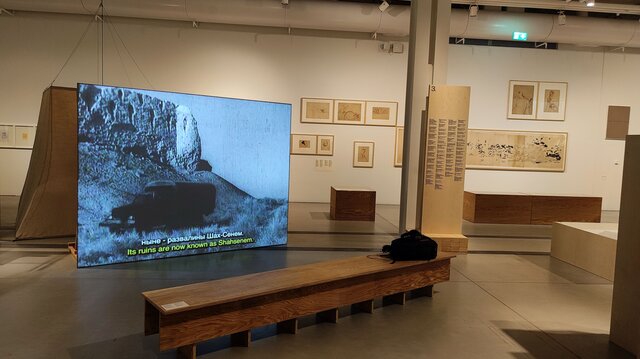Starting in 1937 on the territories of Uzbekistan, Kazakhstan and Turkmenistan under the leadership of Academician Sergei Pavlovich Tolstov, the Khorezm Archaeological and Ethnographic Expedition continued for over half a century, until the dissolution of the Soviet Union. Its scale and duration were unmatched in the history of Soviet archaeology. The works were unfolding simultaneously and shoulder-to-shoulder with grandiose Soviet hydro-engineering projects: the scientists who excavated the ancient irrigation culture of the region were followed by engineers and canal builders with the mission of turning the deserts of Central Asia into verdant agricultural land and new settlements. The latter project was a grandiose failure. As the Soviet archaeologists unearthed ancient Khorezm, Soviet engineers, by their unbridled irrigation projects, ultimately drained the Amu Darya River and the Aral Sea — the mainstays of life in the region — and created a desert.
The dramaturgy of the exhibition is based on a mirroring effect between a reconstructed past and a planned tomorrow — the archaeologist who traces lines in the sand where cities once stood, the architect who plans future cities in the desert, and, finally, human efforts to preserve the past and to preserve life-giving water.
The metaphor of an archaeological expedition determines the very form of the exhibition. Like archaeology itself, Split Together, Merged Apart connects fragments from different levels, contemporary events and events from the distant past, bringing together archaeological finds from the collections of the Museum of Oriental Art, the Hermitage and the Institute of Ethnology and Anthropology of the Russian Academy of Sciences, as well as materials and documents from the Khorezm Expedition archive, and exhibits from other Russian and foreign collections. The artworks (some existing, some commissioned for the project) work like the glue used in kintsugi, a Japanese technique of ceramic restoration — the joins are no less important than the surviving fragments, which are joined. They emphasise gaps and fill lacunae. How the gaps are filled and the way in which our contemporary fantasies are connected with the silent fragments of the past is no less important for the exhibition than its historical subject matter.
Organizers and participants
The Russian Federation State Film Foundation, The Ivanovo Regional Art Museum, Moscow State Integrated Museum-Reserve "Kolomenskoye - Izmailovo", The Multimedia Art Museum, The Shchusev Museum of Architecture, The Russian Academy of Arts / The Scientific Research Museum at the Russian Academy of Arts, The Russian State Documentary Film & Photo Archive, The Tomsk Regional Art Museum, The Mardjani Foundation, The National Archive of the Republic of Uzbekistan, Central State Archive of Literature and Art of Saint Petersburg, GES-2 House of Culture, The N.N. Miklukho-Maklai Institute of Ethnology and Anthropology of the Russian Academy of Sciences, The All-Russian Art Research and Restoration Centre named after Academician I.E. Grabar, The State Historical Museum, The State Museum of Oriental Art , The Pushkin State Museum of Fine Arts, The State Hermitage Museum, The State Tretyakov Gallery
 Mardjani Foundation
Mardjani Foundation






